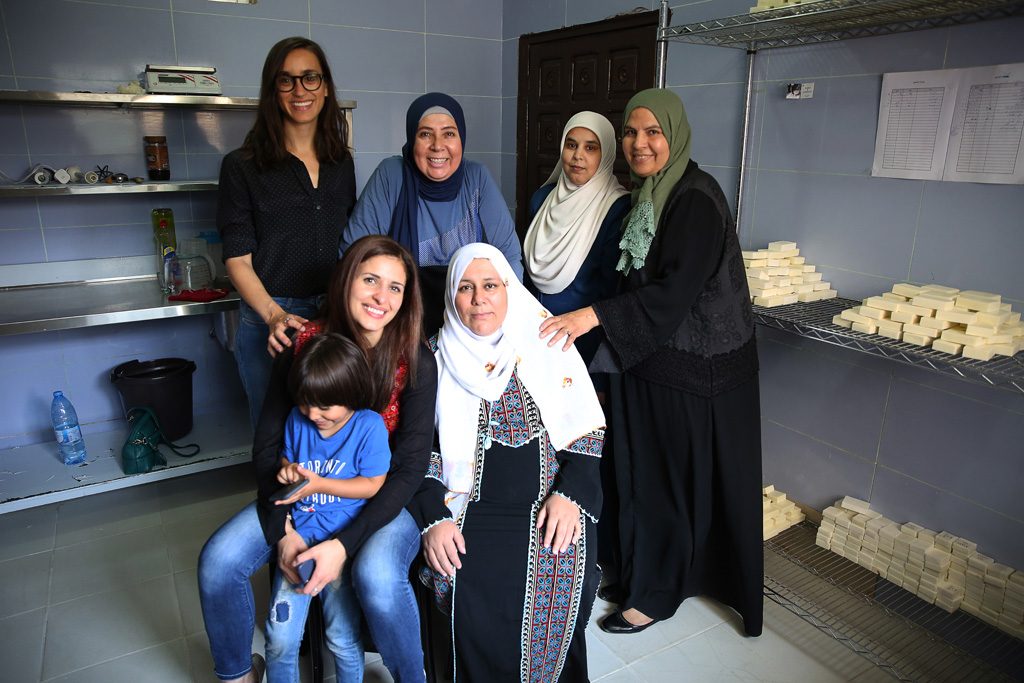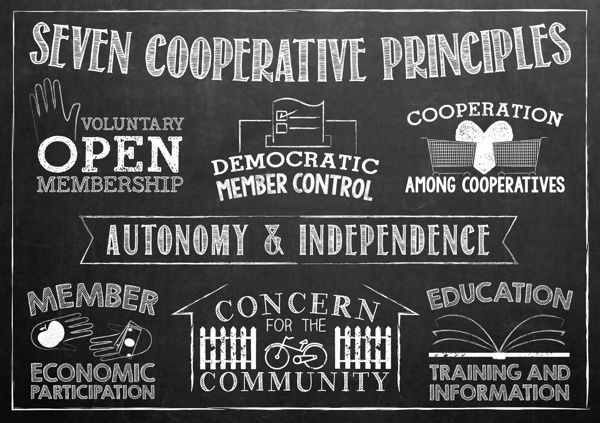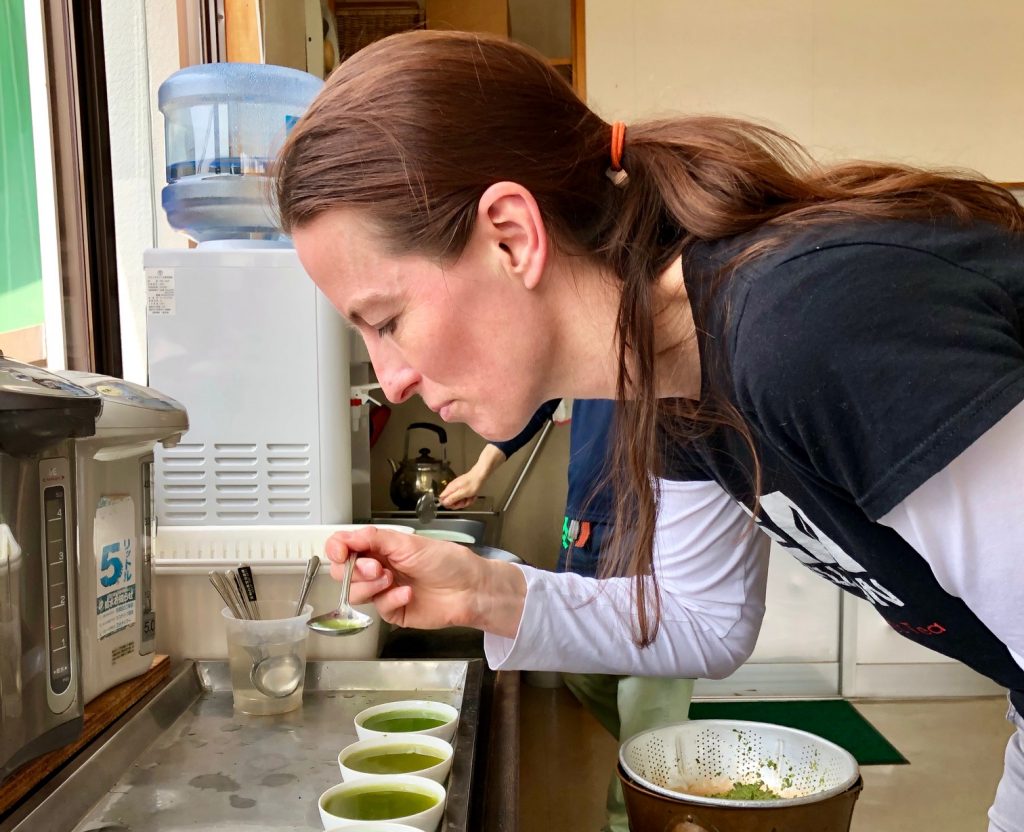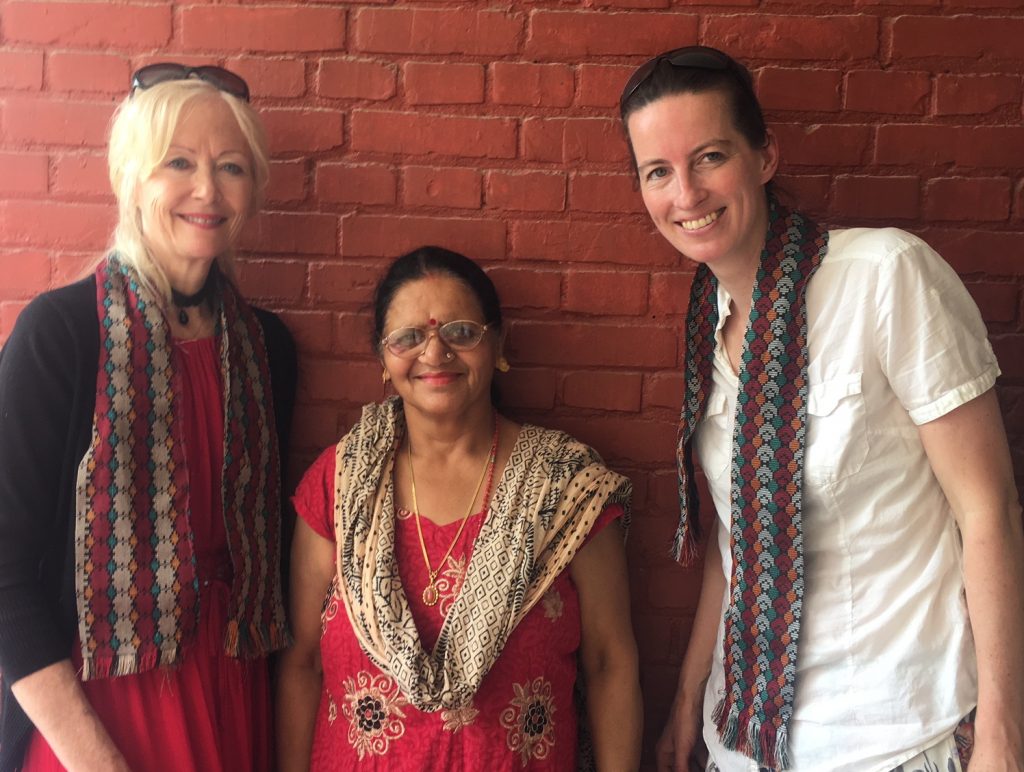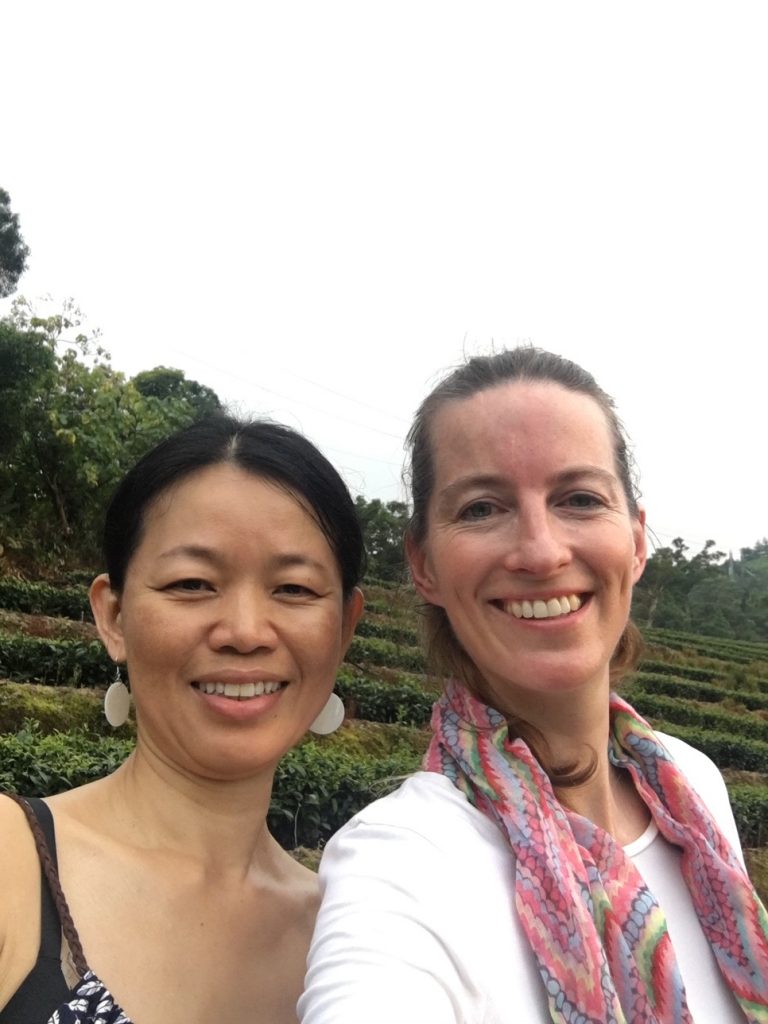At the outset of the writing process for her first book, feminist entrepreneur Madeleine Shaw created a survey to better understand the motivations of her peers. In the 100+ responses that she received, she discerned a set of recurring patterns that she named ‘soul traits’.
Liisbeth is pleased to share this exclusive full text chapter from The Greater Good: Social Entrepreneurship for Everyday People Who Want to Change the World. Dig in!
I knew that I wanted this book to be about more than just my experience right from the get-go. I wanted to learn more about the other social entrepreneurs out there, to illustrate the fact that we can look and act in so many different ways, each with our own stories, gifts, and wisdom. My thinking was also that even if my story did not resonate with you, perhaps someone else’s might. Plus, these entrepreneurs and their journeys are just so inspiring.
So, I wrote a simple survey and sent it out to my colleagues to gather more stories. I received close to one hundred responses and was stunned by the diversity of personal backgrounds, ventures, and depth of passion that they reflected. I was rewarded with some of the most poignant, thought-provoking, and deeply personal stories that I could imagine. There were stories from artists, parents, fitness professionals, sexual health educators, journalists, musicians, scientists, designers, accountants, academics, and more. I should add that they were almost all women, mostly from Canada and the United States, though I did get some wonderful responses from participants in France, the Netherlands, South Africa, Australia and New Zealand.
Respondents ranged from college age to retirees. Although I did not ask about gender or sexual orientation (I did ask for pronouns), several mentioned that they were non-binary and/or queer, and I had many responses from people who made it clear that they were Black, Brown, Asian, or Indigenous.
Their ventures and projects ranged from creative fundraising initiatives to innovative lactation support products, from inclusive technology ventures to adaptive vehicles. If anything, it made me think that social entrepreneurship was a natural place for marginalized people. It stood to reason, I thought, that if you were looking to make the world a better place, folks who have been oppressed or excluded by traditional power systems would have fresh ideas for something different, better, and more humane.
One aspect that stood out for me was that the respondents did not start their careers as entrepreneurs. They became entrepreneurs, often reluctantly. This transformation was one of the most exquisite and fascinating parts of writing this book: learning how these everyday people had become motivated, accepted a challenge, acted on it, persevered, asked for help, failed, flourished, despaired, and celebrated. This is why I wanted them to be part of the book; I wanted readers to see that if these people could do what they did, so can any of us.
As someone who was raised on the “bigger is better” notion of scale when it comes to business or project aspirations (Go Big or Go Home! ), where the object is basically to get more of everything, the survey responses made me start to muse on the notion of lateral scale, or what I have come to call “radiance.” This is a multi-dimensional, proliferative concept of growth and impact, which I will share in greater depth later in the book.
What I mean by this is, instead of looking at an individual business and wondering how to make it as big as possible, what if you looked at a demographic and wondered how to create as many ventures out of their ideas as possible? In other words, creating more enterprises of diverse sizes instead of fewer, bigger ones. How would these two strategies compare in the long run if our metrics of success were not just top-line growth, but also things like reduced greenhouse gas emissions and commuting hours, increased personal happiness, family well-being, job satisfaction and social innovation, among other, more humane metrics? This became my new obsession; what would the result be if these people and their ideas were actualized and supported? What if, alongside all the good things that these ventures would surely create, an entirely new way of thinking about the purpose of commerce and nature of growth also emerged?
In creating the survey, I had hoped to understand not only what had inspired people’s ideas but, vitally, what had motivated them to act on them. In reading people’s answers to the questions and in follow-up interviews, several recurring themes emerged, which I have come to think of as the key “soul traits” of social entrepreneurs and which I’d like to briefly highlight here. Many of these stories will appear at greater length later in the book—this is just a taste.
Perhaps you will recognize aspects of yourself in this list.
COLORING OUTSIDE THE LINES
Social entrepreneurs are so creative! Because their premise in starting a project usually comes from a non-traditional place and they themselves often fall outside the traditional profile of a businessperson or entrepreneur, it’s not surprising that they generate such unique, innovative ideas and organizational models. Some respondents with traditional business education and experience said that they had needed to unlearn their previous ways of thinking, while others who did not have this experience said that they felt unencumbered by limiting beliefs and expectations, which allowed them to try new things and be less afraid of failure.
Social entrepreneurs are by definition “redefiners,” in that they inherently question the accepted purpose of business-as-usual capitalism by putting the “social” part first. These folks go even further, though, coming up with their own definitions of goals, scale, profits, success, and more. What am I talking about? Have you ever heard the expression
“Together Everyone Achieves More” (TEAM)? The Five Ps of Marketing? The VUCA worldview? The 7 Habits of Highly Effective People? There are endless examples of these buzzy business acronyms. But are they inherently true, or did someone, once upon a time, effectively make them up?
Let’s take as an example VUCA (volatile, uncertain, complex and ambiguous), a post-Cold War US Army term that was coined to describe the worldview of the day and has regained popularity in common business vernacular in recent years. My question about VUCA is not whether or not it’s true; it’s about whether or not the concept is helpful, motivating, or inspirational. Personally, it just makes me scared, and scared is not a great place for anyone to create from. Fear is often dismissed (“Choose love over fear!”), but it can, of course, be a sensible and highly valuable reaction in critical situations. Yet fear triggers the fight, flight, or freeze mechanism in the brain, which is not helpful for getting creative or making decisions.
In early 2015, Suzanne and I were asked to give a presentation to an audience of women entrepreneur clients of a major Canadian bank in Calgary, titled “Entrepreneurial Ingenuity in the Age of Constant Disruptive Change.” The Alberta economy was hard-hit at the time and the organizers were looking for practical, yet inspiring content. I had read up on VUCA while attending the THNK School of Creative Leadership, and although I got the concept, something about it left me feeling hopeless, depleted, and frazzled. How were we going to do what was being asked of us while staying true to ourselves? I decided that we needed to reframe VUCA in a more positive and constructive light. Here is what we came up with: CODE.
- C = Colorful
- O = Opportunity-rich
- D = Diverse
- E = Evolving
We often forget, in our never-ending quest to keep up with the latest lingo and concepts, that we have the ability to see what’s true for ourselves and express it in our own ways. Our audience loved CODE. Yes, we were saying, these are scary times. But what actually serves us when we think about that in terms of our personal worlds and businesses? CODE feels exciting while still acknowledging that the world is an unsettled place.
Similarly, in response to the classic business concept coined by Jim Collins and Jerry Porras with the acronym BHAG (big, hairy, audacious goal), I prefer to use “beautiful, healthy, achievable, generative” as my personal success metric.
I also came up with a cheeky reframing of the classic tech industry imperative “move fast and break things,” to “move purposefully and nurture things.”
True Grit
Social entrepreneurs with true grit have the patience, tenacity, and determination to persist, often in the face of immense challenges. Persistence, though unglamorous and underrated, is a common-sense ally for anyone trying to accomplish something that matters to them. I love the word grit; it has a raw, honest quality that related terms like persistence, commitment, and perseverance lack. Grit implies edge, messiness, and overcoming adversity—being “bloodied but unbowed,” to reference WE Henley’s 1888 poem “Invictus.”
Note: Video below is approx. two minutes.
In hindsight, when I think of every business book that I have read, precious few have offered even a shred of self-reflection about the idea that we do not all start from the same place in terms of access to resources and opportunities.
Madeleine Shaw, The Greater Good Tweet
Grit acknowledges that there is a cost to our struggles, and that entrepreneurial success is not as simple as getting a challenge figured out and then reaping the rewards. Grit also reminds me of dirt, which is deeply resonant to me as a devoted gardener. You can’t grow plants in a garden without getting dirty, and you need to be unafraid of stretching yourself outside of your comfort zone in order to bring about something glorious. Patrice Mousseau is an Anishinaabe woman and journalist from the Fort William First Nation in Ontario. When we initially met, she was in the earliest stages of growing her line of homegrown organic skincare products from a side hustle to a fully commercial business, and in the years since I have been humbled to witness the challenges she has overcome as a businessperson, racialized woman, and single mother. She shared with me how often people suggest that her success is due to the fact that she is Indigenous and, as such, supposedly enjoys considerations not available to her white counterparts. This form of judgment serves to undermine the very real, sustained efforts she had to make to build her business in the face of multiple layers of oppression. I can only imagine how frustrating it must be to repeatedly confront systemic bias as you build your venture, only to be told that you effectively don’t deserve the success that you achieve in spite of it.
In hindsight, when I think of every business book that I have read, precious few have offered even a shred of self-reflection about the idea that we do not all start from the same place in terms of access to resources and opportunities. I can’t recall an example of one that explores the notion that for some of us, just getting out of bed in the morning (or even having a bed, for that matter) is not necessarily a given. Building our projects will not be an easy, flower-lined road of yeses and large cheques. The grit required by people who are used to being underestimated in regular life will likely be doubly so as they undertake to bring their visions to life. Such people are the ones we collectively have the most to learn from.
Making Lemonade
“If life gives you lemons, make lemonade.” I am borrowing this classic adage that points to using personal trauma or adversity as creative fuel. This was one of the most common themes expressed by the entrepreneurs I interviewed, and also the most moving. Some of these people literally brought me to tears with their stories of courage and resilience in the face of unimaginable hardship.
Mary Letson is a perfect example. Following her recovery after a harrowing journey with breast cancer, she wanted to give back to others by raising funds for supplemental treatment and supports not covered by health insurance (including massage, physiotherapy, wig fitting, acupuncture, supplements, and meal delivery), which she credits with making a huge difference to her recovery. In addition to wanting to give others in her community undergoing cancer treatment the “extras” she’d had the privilege of being able to access, she also wanted to transform her relationship to the disease that had taken so much from her and redefine the notion of being a survivor to something, in her eyes, more empowered.
A lifelong sports enthusiast, she hit on the idea of creating an annual fundraising swim event on the island where she lives in British Columbia, not only as a way to raise the funds but to assert herself in this new, post-survivor role. To date, she and her SwimBowen Society team have raised over $50,000 and reshaped a grueling journey for herself while benefiting dozens of others confronting their versions of it.
Gifts from the Margins
Part of this ability means using the unique perspectives brought about by being outside the dominant culture to inspire new ideas and insights. Lemonade makers’ ideas are unique and valuable because they are outsiders, not in spite of it.
The phrase “gifts from the margins” relates to a story that Suzanne and I often tell as part of the Lunapads/Aisle story. As much as the brand has been praised for its prescient embrace of transgender and non-binary individuals as part of its intersectional feminist values, the understanding and commitment did not come immediately for us on a personal level.
Initially, despite the persistent championing of the issue by a key team member (who later came out to us as non-binary), we hesitated about making significant changes to our language and product designs to be more explicitly inclusive of this “fringe” group. This was on the grounds that we had limited resources and needed to allocate them to our larger group of cisgender (people who identify with the gender assigned to them at birth) customers. The team member patiently persisted. Coming to see the sense in their perspective as we became more educated, we gradually let go of our old fears and committed to removing gendered language from the website and developing a gender-inclusive product in the form of a boxer brief-style period undergarment.
Until that point, all of our styles had been traditionally feminine, with color choices leaning that way as well. It took us almost two years to develop the boxer brief, yet when we finally launched the product in early 2016, it was far and away our most successful product launch in the company’s history. In case you’re thinking, as I did, “Wow, there are a lot more gender non-conforming folks out there than I thought,” give your head a shake.
What the launch numbers showed us wasn’t just that trans customers were buying the boxer brief; it was that everyone was. So much for thinking that the dominant majority is who you want to cater to—it turned out that the needs of marginalized people were actually pointing the way to the future.
Lots of marginalized and underrepresented people showed up to share their stories in the survey: people who felt like they didn’t fit in as traditional customers, consumers, or citizens; immigrants, LGBTQIA+ individuals, and Indigenous people; those with uncommon skill sets, ways of thinking and interests, who see that just because something is missing in the market, it doesn’t mean that the world doesn’t need it. It’s more like an indicator of who has been in charge up to that point, who has decided what normal is, and whose voices and values are included . . . or not.
Stronger Together
This trait involves not assuming or embracing an ego-driven, individualistic entrepreneurial persona. Instead, it means asking for help, working collaboratively, and building community. My respondents had great ideas to make their own lives better but also wanted to make life better for others, and often created new structures to embrace or celebrate these people. They defy the traditional “lone wolf ” entrepreneurial stereotype.
Given that the point of their enterprises is some form of shared social impact or equity, it makes sense that they would instinctively include others while building generosity and diversity into their leadership styles and the DNA of their ventures.
The largest-scale version of this that I can speak to personally is SheEO founder Vicki Saunders. Most entrepreneurs—even social entrepreneurs—build their ventures in order to serve a specific need or market gap, not to change something systemic. SheEO is a response to the fact that women are so drastically underserved and underrepresented in the business and entrepreneurial worlds. It exists to offer a new solution, one based on our needs and values.
As I’ve watched her leadership over the years, Vicki (at the far left in the image above) has ceaselessly sought to elevate and make space for racialized and transgender women and those marginalized in other ways, both within her team and in the broader community. Beyond this, she embraces a distributed, non-hierarchical leadership model, all while exhibiting remarkable humility.
Impact is the New Black
This one may seem obvious given that the book is about social entrepreneurship, but it’s worth noting that impact is not just a nice-to-have for these folks; it’s their entire rationale and, as such, is an immense source of inspiration, energy, creativity, and drive.
My longtime colleague Amy Robinson typifies this soul trait. A lifelong environmentalist, she saw an opportunity to elevate the cause of supporting grassroots economic sustainability through education, awareness, and advocacy. She created LOCO BC, a vast network of sustainable small businesses located in the Greater Vancouver area that hosts events and encourages consumers to shop locally whenever possible. LOCO’s research has been used to advocate for small businesses by groups across BC and in the rest of Canada and has resulted in more support from local city councils, as well as increased awareness from consumers.
Impact Is Also the New Currency
Given the current vogue for scalable businesses, it was surprising that financial scale as a motivation took a firm back seat to impact for my interviewees. What motivates them is the particular change they can make and taking it as far as they can, rather than just being big for bigness’ sake. Further to that, scale of any variety beyond basic success (as defined by being effective and sustainable, as opposed to scalable) did not seem to be a hugely motivating factor. The biggest incentive for many was simply wanting to give it a try, with impact as the driver for taking the plunge.
Willingness to Transform
This trait means being willing to change key self-perceptions in order to realize your vision. It goes beyond just getting outside your comfort zone; for many respondents, taking on their projects entailed significant personal transformation.
At Groundswell, Vancouver’s alternative business school, they often talk about “nurturing entrepreneurs from the inside out,” meaning that in order to start a venture, you first need to build a new sense of self. Many of the respondents to my survey needed to do some major mental and emotional shapeshifting to get their heads around starting a venture and did so with great success.
Margaret Magdesian, a Brazilian-born, Quebec-based biotech entrepreneur with a PhD in biochemistry, started Ananda Devices to maximize the impact of the research she was doing around increasing the speed and safety of animal-free drug testing through nanotechnology. Initially daunted by the idea of starting and running a company instead of being a successful laboratory scientist, she nevertheless persisted, fueled by the realization that if she did not take this step, the opportunity that the technology represented might never be fully realized.
Among the survey respondents, I heard stories from singers, videographers, marine biologists, fitness trainers, scientists, journalists and more, all of whom courageously made the leap from their chosen career path and identity into the world of social entrepreneurship. It was not always easy or comfortable, yet they let their desire to change the world override their fears and self-limiting beliefs to move their ideas forward.
Honouring Your Calling
This phrase kept popping into my head so persistently that even though few of the respondents actually used this language, I knew that I had to include it. Other words for “calling” include vision, intuition, emergence, or whatever way you choose to express non-linear forms of knowing that someone was somehow meant to do a certain thing. I have heard it characterized as a small inner voice, “just knowing,” or as a series of signs, coincidences, or events that consistently and irresistibly pointed to a particular idea.
Sabrina Rubli, founder of Femme International, a non-governmental organization that uses menstrual and reproductive health education to empower women and girls in East Africa, shared the following with me as an example:
“I have always been passionate about women’s rights and women’s health. For me, using my skills and ability to empower women was not a question—I feel like it is my responsibility. Once I had the idea for Femme in my head, it was all I could think about, and I dove in headfirst.”
Dancing With the Demons
Demons that can arise as you begin a new venture include imposter syndrome, fear of failure, and profound self-doubt. I call it dancing rather than slaying, because many respondents found ways to be with their demons instead of trying to vanquish them. This key insight is more about making peace with yourself than trying to crush a part of you that may not actually need to be crushed for you to move forward.
Personally speaking, this is one of my biggest challenges. No matter how much experience and “success” I have under my belt, believing in myself is still hard to do consistently. Self-doubt is one of the more persistent and pervasive issues that came up for the entrepreneurs that I surveyed, especially for marginalized people. What is clear to me about these people is that although their demons came at them full force, they grappled/danced with them and carried on. They did not let the demons win, which would have meant these brave souls never trying to realize their dreams in the first place.
Their other piece of courage was having the humility and vulnerability to admit that they struggled at all. I can think of very few examples of a white, male business leader speaking openly about self-doubt or fear of failure. I wonder whether they actually do experience this and just don’t talk about it, or whether they are, in fact, so sure of themselves that it never occurs to them to question their abilities.
For Elizabeth Sheehan—the creator of ClimateSmart, a climate impact assessment tool for businesses—fear showed up as self-doubt, my personal Fear CEO. Internal voices would persistently question her ability to lead. “I had this crazy pattern where if things were
challenging, the voice said that I was responsible and wasn’t smart enough or doing whatever task at hand right,” she shared with me.
“I had to train myself (a work in progress) to curate a more welcoming and spacious attitude toward the inevitable ups and downs of a social venture.” Whatever fear may look like for you, know that you’re far from alone and that it’s a natural internal response to th fact that you’re considering taking on something you have likely never done before. We’ll get much deeper into this topic later in the book and explore creative and compassionate tools for dealing with it constructively.
Before moving on, take a moment to consider how these soul traits land for you. Do you identify with any of them? Did they inspire more traits to add to this list? Perhaps you can already sense which of your innate qualities may be emerging as you consider taking next steps to express your vision for a better world.
The Greater Good: Social Entrepreneurship for Everyday People Who Want to Change the World can be purchased here.
Additional Resources: Check out this video recording of the Oct. 14 2021 event on the current state of social enterprise in Canada. The event was organized and sponsored by Ryerson University’s Women’s Entrepreneurship Knowledge Hub (WEKH). It includes a powerful keynote talk by Dr. Tina Dacin, a presentation by Tori Williamson on Buy Social Canada followed by a stellar panel including Natasha Freidus, Needslist, Hermine Mbondo, B4Brand, Ann Jameison, Social Enterprise Council of Canada and of course, Madeleine Shaw, Aisle. The panel was moderated by pk mutch, founder of LiisBeth Media.
Related Reading

When Great Granny Inspires Great Work
A unique social enterprise that has been generations in the making tells us how to scale and build a resilient enterprise in tough times.

Federal Government Announces $3.6 Million Investment in Women-Led Social Enterprises in Ontario
The Women of Ontario Social Enterprise Network (WOSEN) gets lift off thanks to the Women Entrepreneurship Strategy Fund (WES).
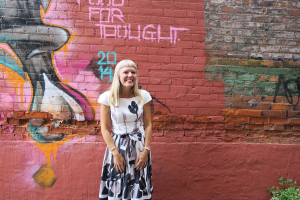
Feminist Entrepreneurship—Changing the Face of Capitalism, One Enterprise at a Time
Award winning Lunapads founder, Madeleine Shaw says “When it comes to feminism and capitalism, I personally believe that the success of the feminist business revolution will be to change capitalism…”.






